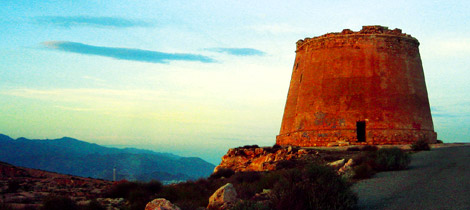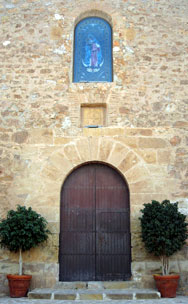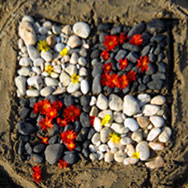- Villa search

- Canaries
- Caribbean
- Croatia, Bulgaria and Hungary
- Cyprus
- Florida
- France and Corsica
- Greece
- Italy
- Lakes and Mountains
- Madeira
- Malta and Gozo
- Portugal
- South Africa
- Spain - Balearics
Average temperatures and rainfall in the Costa de AlmeriaTemp °CRainy DaysJanuary154February154March173April184May213June251July300August301September262October235November205December156Travel News: Costa De Almeria
For a map of the Costa de Almeria area visit our Map for villas in Costa de Almeria page – the link will open in a new window.

On the Mesa Roldán
Villa holidays on the
Costa de AlmeríaIf you’re looking for clear skies, reliable sunshine and fine beaches, look no further than the Costa de Almería. With at least 300 sunny days and more total daylight in a year than anywhere else in the world, this south eastern corner of Spain is blessed with a perfect holiday climate. Asthma, arthritis and rheumatism sufferers also benefit from year-round warm, dry conditions.
The freedom from clouds makes the area very dry and gives it its amazingly clear, bright light. Inland it’s virtually desert, which is why so many famous films (including Indiana Jones and the Last Crusade, A Fistful of Dollars, Lawrence of Arabia, Patten and many more) have been shot here. Several of the old film sets – including Mini Hollywood in the Sierra Alhamilla natural park – have been developed into complete Wild West towns, where you can enjoy dramatic western-style spectacles where the bank is robbed and the Sheriff takes on the bad guys three times a day!
Mostly Mojácar

Most of the privately owned villa accommodation on the Costa de Almería is at its eastern end, near the border with Murcia. The town of Mojácar, on a hillside a little inland in the foothills of the Sierra Cabrera, has given birth to the seaside development of Mojácar Playa, set around a beautiful beach of pure golden sand. Most of the new buildings are in Moorish style, with very little high-rise, so although Mojácar Playa provides all the tourist amenities you could wish for, including plenty of discos, a wide range of restaurants and multiple bars, it remains stylish and quite Spanish in feel.
Mojácar itself is a beautiful ancient town with a clear Arab past, stretching back even to pre-Roman times. Overlooking its steep, terraced streets (it’s almost impossible to find two on the same level) is the old atalaya, or watchtower. Many visitors have fallen in love with the town’s strong personality and settled here permanently. Even if you don’t go that far, it’s well worth a leisurely visit.
As well as the fine choice of villas in Mojácar, there are several developments further inland, in the unspoilt Sierra Cabrera. Cabrera itself is set high up on a mountain, while lower down is Cortijo Grande, with its well-known golf course. Interesting places to visit or stay include the fishing village of Garrucha – possibly the best place to sample the superb local fish – and the whitewashed resort town of Carboneras, famous for its clear water and huge beach of fine sand. A little further north is the old town of Vera, with its own coastal resort area including the Puerto Rey complex, and Villaricos.
To the south of Carboneras is the Cabo de Gata-Níjar nature reserve. Mostly preserved from modern development, its pristine beaches and sparkling clear waters let you experience the original, natural state of the area. Inland, the landscape is volcanic with areas of sand dunes. Wild olive trees, palmettos and species native to Africa like the jujube tree abound, while 169 different bird species have been sighted and flocks of up to 2,400 flamingos have been counted in the park.
Capital assets

Almería itself is the capital city of the region. It has a powerfully Mediterranean, and, in parts, even African feel, with its sand-coloured buildings and palm trees. Although cities may not appeal if you’re on a beach holiday, this one shouldn’t be missed. Its 10th century Alcazaba (fortress) is the biggest in Spain and its fortress-like Cathedral has a beautiful renaissance interior. The Plaza de la Constitución, with its wide, arched porticos is the most beautiful of the city’s many squares, but for bustle and life you should head for the smaller plazas in the Puerta de Purchena area.
As you head west along the coast from Almería, there is the amazing sight of a landscape covered in gleaming, silvery plastic. This is the home of all those tomatoes, peppers and iceberg lettuces that crowd the shelves of British supermarkets. But there are plenty of seaside resorts along the coast too. These run from Aguadulce, with lots of tourist development, to Adra. Along the way is Roquetas de Mar, with a long beach, full-size golf course and a tourist complex which, strangely, has few British visitors but is thronged with other nationalities. Beautiful beaches such as Guardias Viejas, Balerma and Balanegra lead to the old Phoenician (but now developed) town of Adra, with its modern marina. More peaceful is the town of Berja, a little inland, with some beautiful old buildings.
Almería has a fine modern airport, served by an increasing number of scheduled and charter flights. You can also reach the Mojácar area quite easily from Murcia or even Alicante airports, while the western area around Adra is within easy reach of Málaga airport.
home | destinations and editorial | villa search | property for sale | car hire | flights | services
villaseek blog | contact villaseek | links and resources | advertise your villa© Dune Root Ltd and Villaseek.com 2012 - Caribbean
- Canaries